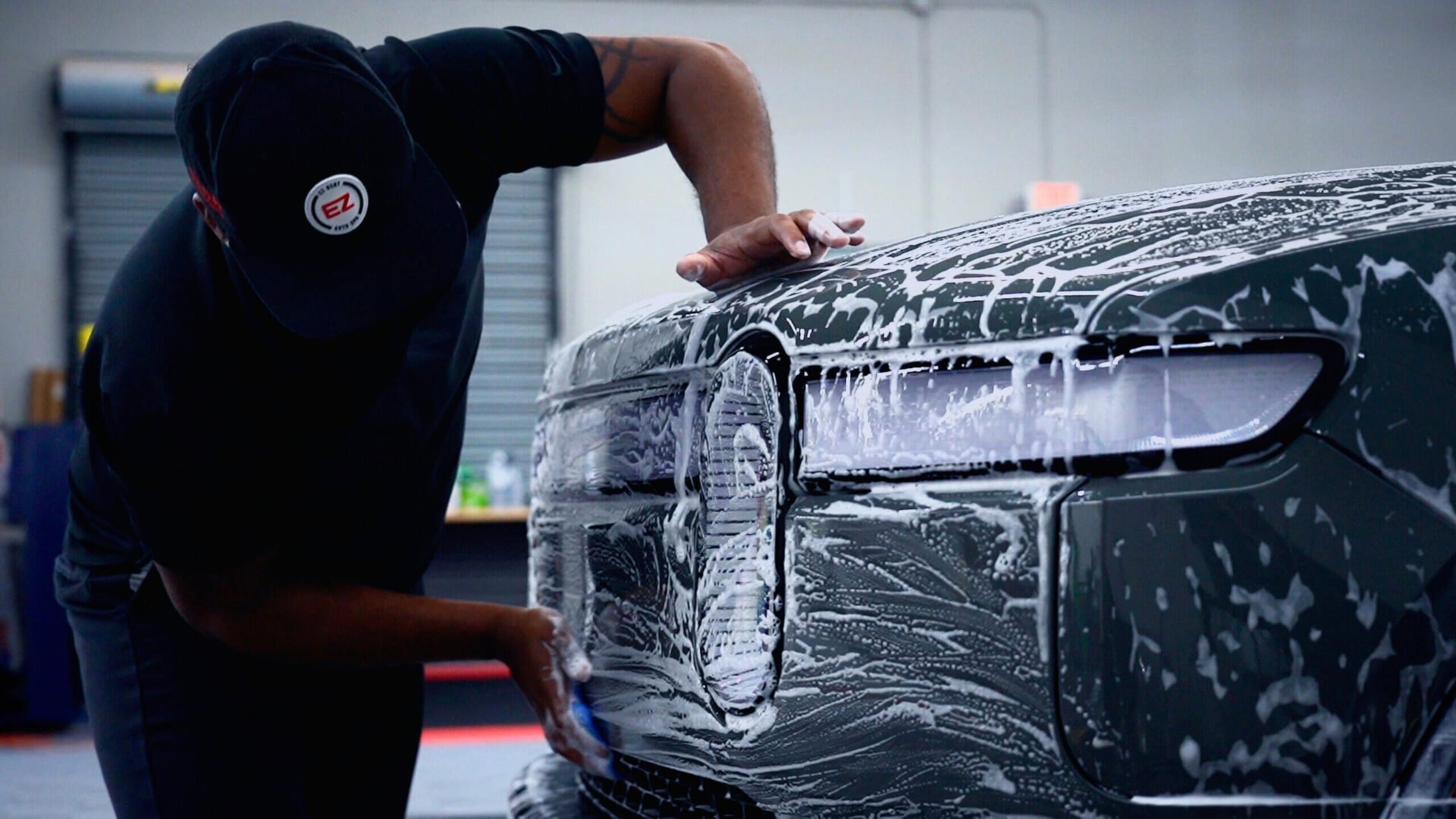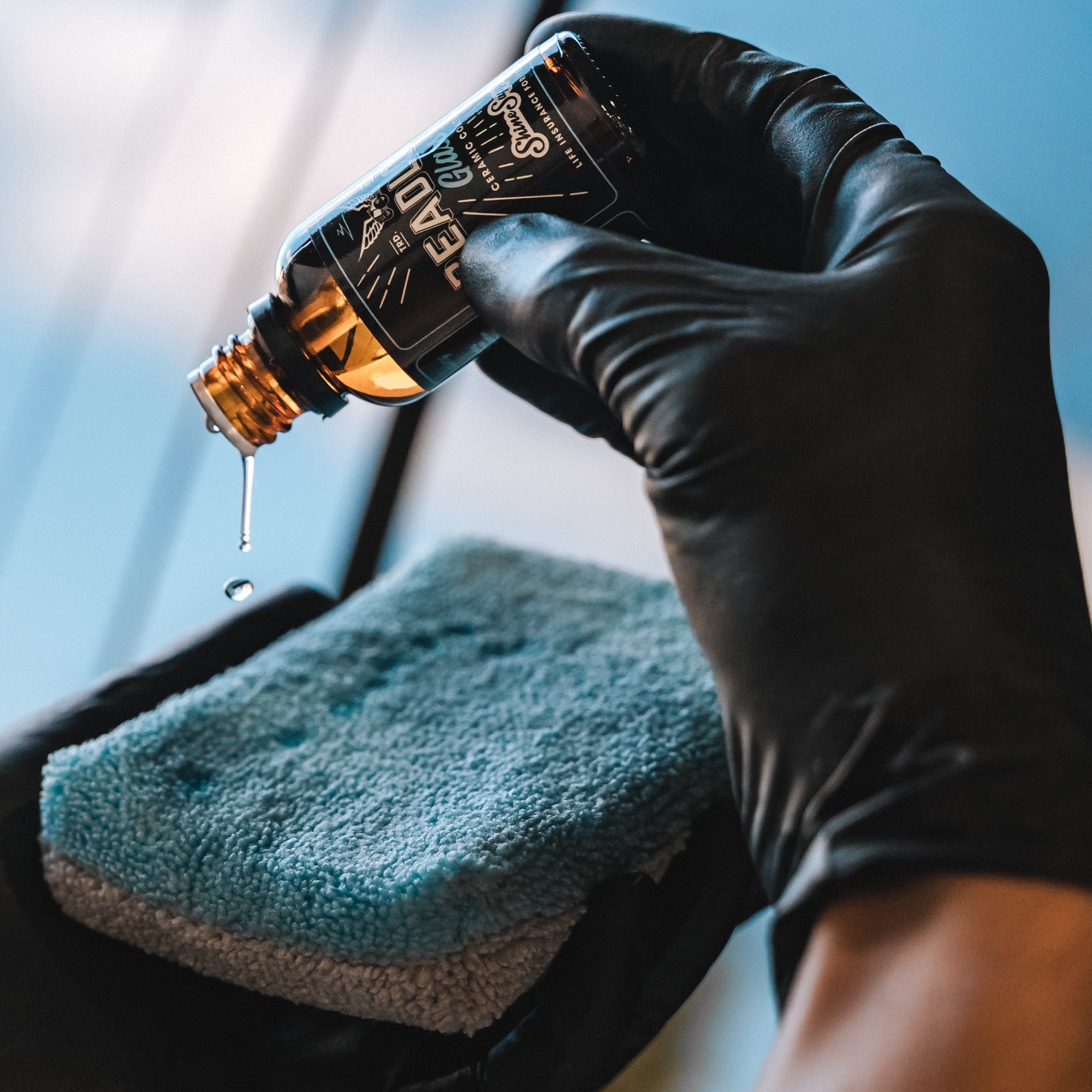Ceramic Coating: The Ultimate Solution for Preserving Your Automobile's Luster
Ceramic Coating: The Ultimate Solution for Preserving Your Automobile's Luster
Blog Article
Exploring the Scientific Research Behind Ceramic Coating and Its Influence On Vehicle Outlining
The application of ceramic covering in cars and truck detailing stands for a considerable development in automobile care, rooted in its sophisticated chemical buildings, largely silica dioxide and titanium dioxide. As we check out the ins and outs of the application process and the long-term effects for car upkeep, it becomes clear that the option of ceramic finishing can basically alter one's method to car treatment.
What Is Ceramic Layer?
Ceramic finishing is a modern-day option that has obtained popularity in the auto outlining sector for its capability to give lasting defense for car surface areas. This advanced safety layer is usually made up of silica dioxide (SiO2), which forms a solid bond with the vehicle's paint, producing a durable shield versus environmental impurities. Unlike standard wax or sealants, ceramic finishings offer remarkable resistance to UV rays, chemical stains, and physical abrasions.
The application of ceramic finishing entails a precise procedure, where the car's surface is thoroughly cleansed and decontaminated prior to the covering is used (Ceramic Coating). When treated, the finishing boosts the automobile's gloss, depth, and quality, supplying a showroom-quality surface that lasts for years. Among the essential benefits of ceramic finish is its hydrophobic properties, which push back water and dirt, making maintenance much easier and reducing the regularity of washes
The Chemistry of Ceramic Layer
A fundamental facet of ceramic covering lies in its chemical structure, mostly identified by the presence of silica dioxide (SiO2) This substance is important to the formation of a long lasting, protective layer that bonds chemically to the vehicle's surface area. When applied, the SiO2 molecules undergo a procedure called polymerization, wherein they develop a network of interconnected structures. This leads to a robust, hydrophobic surface that fends off water and impurities.
In enhancement to SiO2, numerous ceramic layers incorporate titanium dioxide (TiO2) and other additives to enhance their performance attributes. TiO2, for circumstances, adds to increased hardness and chemical resistance. The interaction between these substances creates a distinct molecular structure that uses a high level of security versus ecological aspects such as UV rays, acid rain, and oxidation.
Additionally, the application procedure usually includes a precise preparation of the surface area to make sure ideal adhesion of the layer. This chemistry not just makes sure a resilient finish however also improves the visual appeal of the lorry. Comprehending the intricate chemistry behind ceramic layers is necessary for describing specialists who intend to offer superior protection and longevity for their clients' lorries.
Advantages of Ceramic Coating
While describing specialists usually highlight the advantages of ceramic coatings, their benefits extend much beyond aesthetics. Ceramic coatings produce a hydrophobic surface area that repels crud, dust, and water, dramatically decreasing the frequency of cleans and the initiative required to maintain a lorry's appearance.
Furthermore, ceramic coverings boost the longevity of the vehicle's coating. Unlike standard waxes or sealants, which might last a couple of months, ceramic coatings can withstand for several years, giving a lasting service for automobile treatment. This resilience converts to set you back financial savings, as owners are less likely to need frequent reapplication.
Furthermore, ceramic finishes are immune to chemical spots and etching, which can take place from acidic compounds like bird droppings or tree sap. This resistance not just maintains the automobile's appearances yet likewise minimizes potential damage - Ceramic Coating. In general, the financial investment in ceramic finish provides car owners a substantial return in terms of protection, convenience of upkeep, and lasting aesthetic appeal, making it a progressively preferred option in the world of vehicle describing
Application Refine Described

When the surface area is appropriately prepared, the ceramic finishing can be applied. It is typically carried out in a regulated environment, such as a garage or outlining bay, to avoid contamination from dirt and particles. Utilizing an applicator pad, the professional uses the finish in little sections, operating in a crosshatch pattern to guarantee also insurance coverage. It is vital to click over here adhere to the manufacturer's guidelines relating to application thickness and healing times.
Once cured, the ceramic coating creates a solid bond with the paint, giving enhanced protection and a glossy surface. Proper application is important to maximize the longevity and performance of the ceramic coating.

Long-lasting Influence On Lorry Treatment
The long-term effect of ceramic finish on automobile treatment is substantial, as it fundamentally modifies just how proprietors keep their lorries. By creating a resilient, hydrophobic layer on the vehicle's surface, ceramic finishes minimize the adherence of dirt, grime, and impurities. This home decreases the frequency of cleaning required, inevitably conserving water and cleansing products.
In Addition, the UV security supplied by ceramic finishes helps to stop oxidation and fading of the lorry's paint, preserving its visual appeal and resale worth with time - Ceramic Coating. This safety barrier additionally decreases the chance of scrapes and swirl marks, which are common problems in conventional paint surfaces
Furthermore, ceramic coverings assist in simpler upkeep, allowing owners to clean their lorries with very little effort. The smooth surface area makes it hard for pollutants to bond, enabling easier elimination during regular more tips here cleansing.
Over time, the financial investment in ceramic covering might cause cost savings in vehicle care services and products. On the whole, the enduring benefits of ceramic finishes not just enhance the look of lorries yet also contribute to a much more efficient and lasting strategy to lorry view publisher site upkeep.
Final Thought
Finally, the application of ceramic finishing represents a significant development in automobile describing, driven by its one-of-a-kind chemical structure of silica dioxide and titanium dioxide. This technology not just boosts the visual allure of lorries however likewise provides durable defense versus ecological risks and use. The long-lasting benefits, including lowered upkeep regularity and improved longevity, emphasize the value of ceramic finishings as a vital financial investment for maintaining lorry appearance and stability gradually.

Report this page